This story was originally published by Inside Climate News and is reproduced here as part of the Climate Desk collaboration.
Solar farms stretch out mile after mile along Interstate 10 around Palm Springs, creating one of the densest areas of solar development in North America in the heart of California’s Colorado Desert. But the area’s success in meeting the state and the nation’s renewable energy goals is running up against the Southwest’s biggest climate challenge: Having enough water.
Local wells in the area have gone dry since the construction of multiple utility-scale solar projects near Desert Center—threatening the only water source for hundreds of people and a handful of local businesses. Solar farms typically don’t use much water when operating, but during construction, the law requires developers to mitigate dust—which can spread health problems like Valley Fever. That requires water.
The projects are being built on public land overseen by the Department of Interior’s Bureau of Land Management. The federal agency knew the construction of the solar projects could impact local wells and may even be over-drafting the aquifer beneath them, according to former BLM staff, studies on the basin and public documents from the agency’s environmental assessments of the projects.
While the communities around Desert Center are small, the sunshine is nearly endless and it has all the infrastructure a solar project would need: transmission lines to distribute the power, roads for workers to get to the projects and a major highway nearby that allows the easy transportation of construction materials. When the nation began looking to transition away from the fossil fuels driving climate change, no place was better suited for solar energy development.
Under the 2012 Western Solar Plan created by the BLM, 298,321 acres of public lands were divided up and labeled as “solar energy zones”—areas perfect for developing the resource. Nearly half of them are in the Riverside East zone, where Desert Center lies. That plan to “help accelerate and continue momentum for the clean energy economy,” is now being reviewed by the BLM, according to the agency, and has the potential to open up areas for solar development in five more states and across even more public land in states that are already being developed.
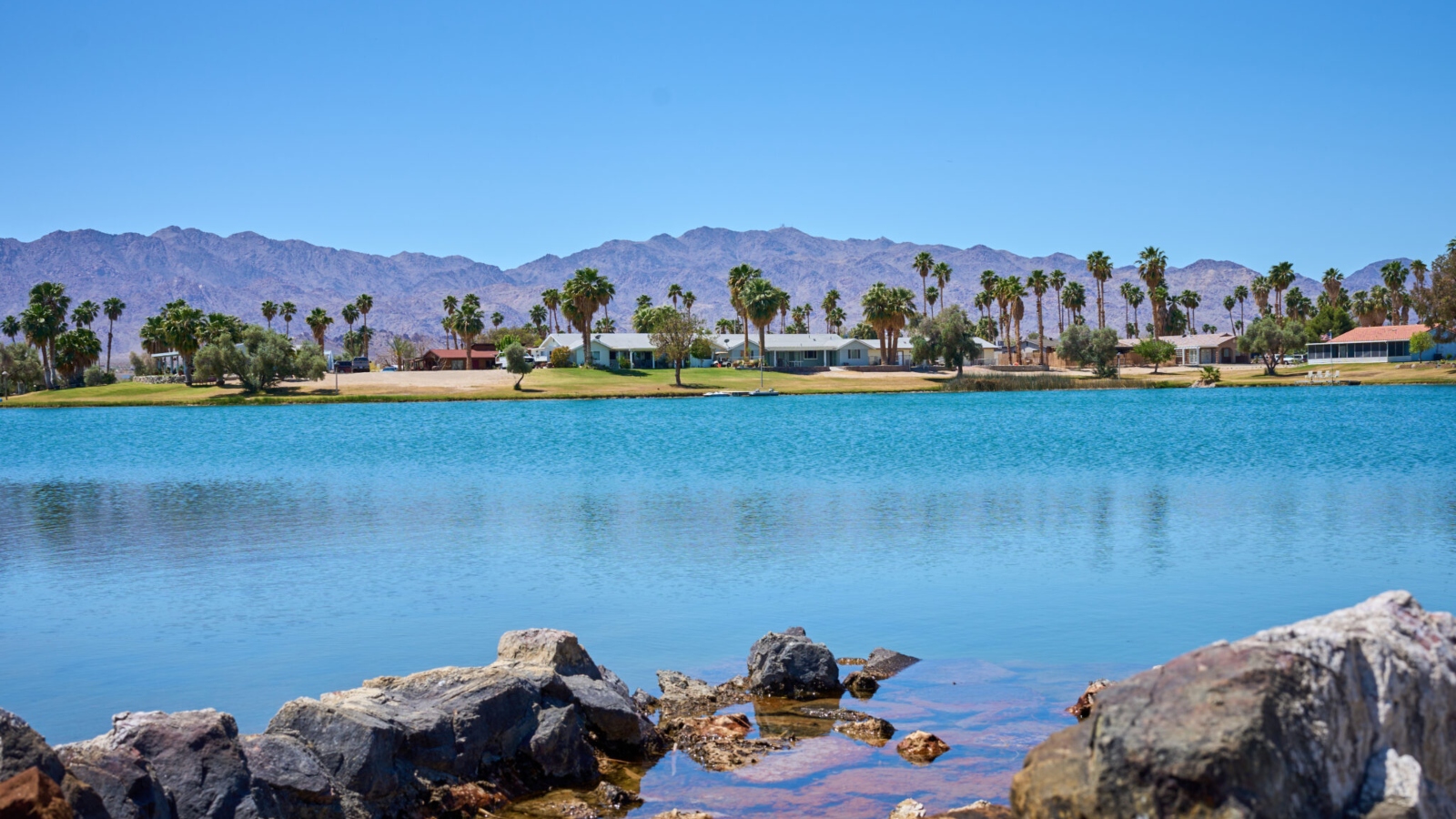
Alex Gould / Inside Climate News
Seven utility-scale solar projects stretching out across nearly 19,000 acres of mostly public land have been approved by the BLM near Desert Center, with more projects under consideration. Together they would provide close to 3,000 megawatts of electricity—enough for around 2 million homes.
If solar companies’ use of groundwater dries up local wells, the BLM requires them to reduce their pumping until the aquifer returns to levels that allow wells to resume operations and cover the expenses for replacing equipment and wells. But local well owners say they have received no help so far.
Limited data exists about the aquifer—the Chuckwalla Valley Groundwater Basin—but studies over the past decade showed what was being pumped out likely exceeded what was going back in. Bringing in water from elsewhere would be too costly, so developers rely on groundwater during construction.
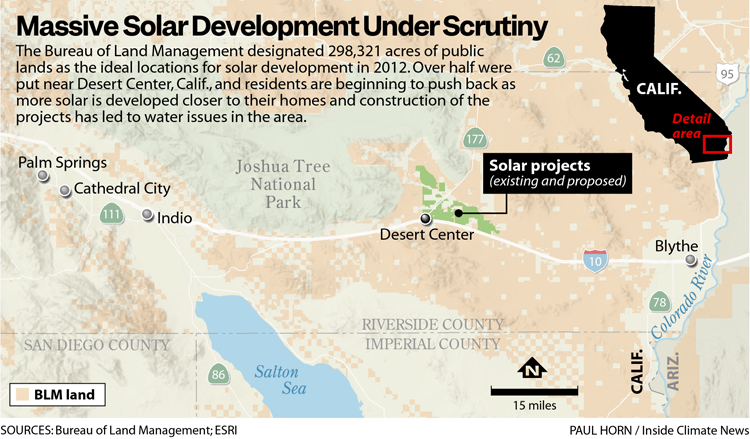
Demands on a scarce resource
Across the drought-stricken Southwest, the importance of groundwater is coming to the surface. The resource has propped up development and agriculture in parts of the region lacking a diverse portfolio of water resources, leading to overuse of groundwater that has led the land beneath homes to sink and wells to run dry.
In Desert Center and similar California communities, underground aquifers are the only source of drinking water. Across the border, Arizona announced this month that the Phoenix area would no longer be allowed to grow on groundwater alone. New developments will have to rely on other sources approved by the Arizona Department of Water Resources.
But, unlike a lake or river in which the water is visible, monitoring groundwater levels is challenging. “It’s all happening beneath your feet,” said Jason Melady, a principal hydrogeologist at Summit Water Resources, a water resource management consulting company contacted by a local resident. Having data is key to assessing how a development will impact the resource, said Melday and other groundwater experts, but it can be hard to come by.
The BLM reported there was enough groundwater for the most recently approved projects from Intersect Power and Clearway Energy Group in its environmental assessments of the proposed developments, but also found data was limited and the basin could already be overdrawn. Even if it wasn’t being overused, the project “may adversely affect operation of nearby wells,” the assessment stated.
A different proposed solar project from Intersect Power would require another 1,000 acre-feet of water during two years of construction, and yet another proposed development would need a water supply, likely from the aquifer, but how much has not yet been determined. One acre-foot typically provides enough water for two households in a year.
The water assessments for each recently approved project found the recharge of the aquifer from rain could range from 206 to just over 20,000 acre-feet a year.
“That’s not a great information basis for your planning,” said Andrew Ayres, a research fellow at the Public Policy Institute of California’s Water Policy Center. In recent years, he said, other aquifers in the state have had to religiously document the recharge rate of their basins, how much water was being extracted and where it goes under California’s Sustainable Groundwater Management Act, passed in 2014.
But none of that has been done for the Chuckwalla Valley Groundwater Basin. While the law requires basins in overdraft to form agencies that regulate the groundwater and restrict water use to avoid long-term issues, Chuckwalla Valley is designated as a low-priority basin that doesn’t have to do any of that. The law also doesn’t apply to federal lands, which is where most of the solar projects are being built.

Alex Gould / Inside Climate News
The main complication of water issues in these projects is the disconnect between state and federal policies, said Dustin Mulvaney, a professor in environmental studies at San Jose State University whose research focuses on sustainable and just transitions to solar power.
“It’s a consequence of a public lands project,” he said, noting that California doesn’t regulate or monitor water pumped on federal public lands, even though it comes from the same aquifer the state oversees. “This is a gap in the state’s plan, not just regulation or oversight, but just tracking. This is a huge gap for them.”
Without oversight now, Riverside County, where the basin is located, “could get pulled into a situation in which you basically sleepwalk your way into more stringent regulation,” Ayres said, “and that can be really demanding and really costly.”
The basin could already be overdrawn, or have too many wells competing with one another in an area, Ayres and Melady said. The only way to know, they said, is to invest resources into finding out more about the basin.
Preventing further decline of the aquifer and getting help for those already impacted by shortages is top of mind for people who live here.
Desert Center itself is little more than a “ghost town” where travelers between Los Angeles and Phoenix once stopped for food, gas and repairs. A few miles north lies Lake Tamarisk, a retirement community of around 200 where neighbors view each other as family and spend their days admiring the desert.
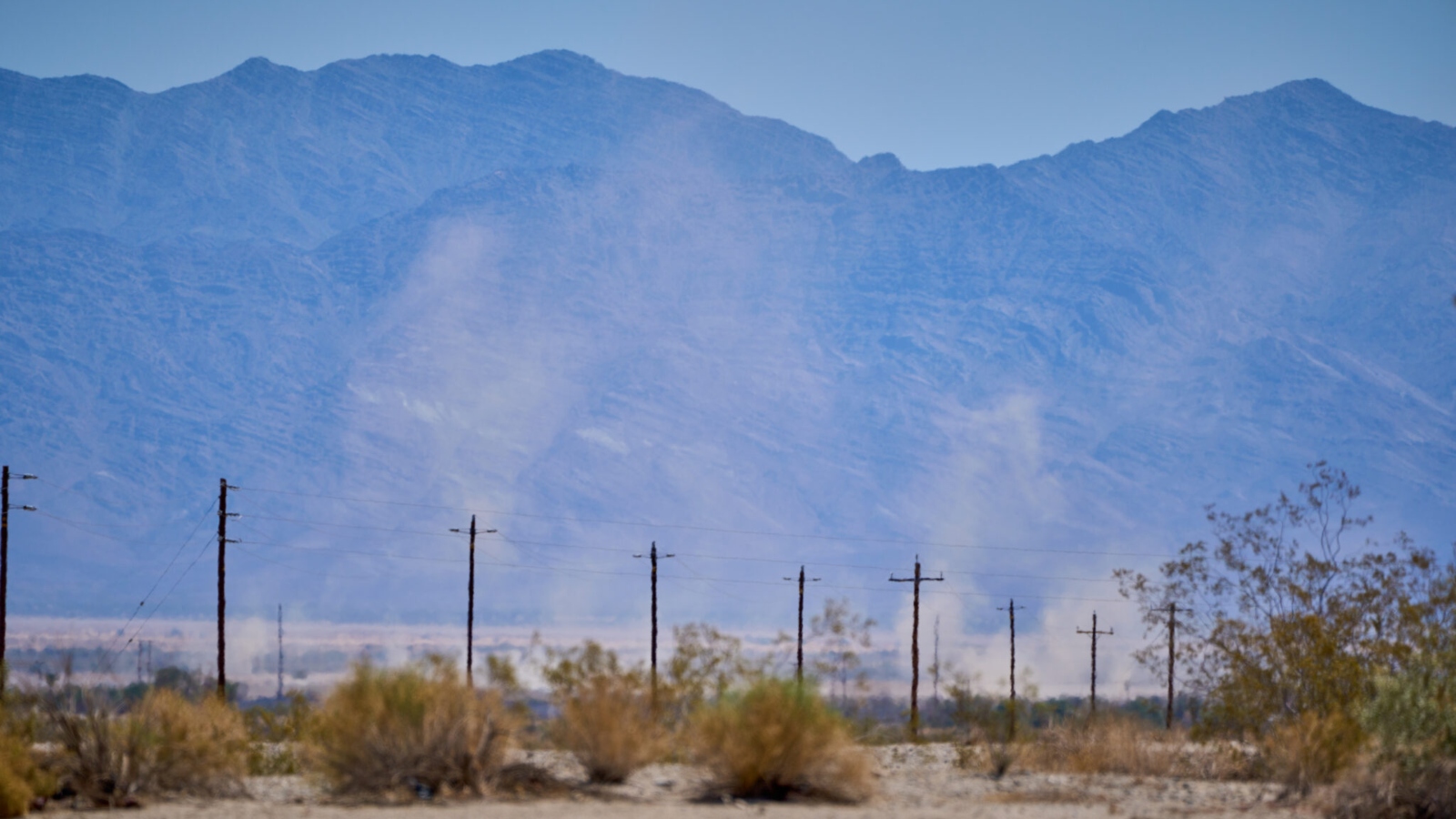
Alex Gould / Inside Climate News
But the views of the endless desert filled with sacred Indigenous sites, palo verde and ironwood trees, and endangered desert tortoises are now disappearing as solar panels spread around the local communities. The citizens of Desert Center and Lake Tamarisk, like others across the country, are beginning to push back. After being left out of conversations about previous solar development near their homes, they’re determined to be heard as two new solar projects are proposed in the area.
“No one took into consideration a community lived out here,” said Teresa Pierce, a resident of Lake Tamarisk who has helped lead the community’s response to future solar development. While they aren’t entirely opposed to solar, she said, “we’re against it being so close to our community and stealing our water out from our aquifer.”
‘Dead without water’
The first sign of trouble arrived this February, months after the most recently approved solar projects began construction, when John Beach got an email from his bank saying he hadn’t paid the electric bill for his property in Desert Center because it had exceeded his authorized limit. His land has no home on it, just two palm trees he’s been irrigating for 15 years, and his water pump was working overtime because it wasn’t getting any water.
His electricity bill in January was $15. In February, it was $1,800.
Later that month, a local RV park had its well go dry, too. The water table had dropped 50 feet, leaving about 70 residents, most of whom are construction workers for the solar projects, without water for a week. Fortunately, the well was deep enough that all that needed to be done was lower the water pump, which cost $16,000. But it can’t be lowered again should the water table continue to fall.
“That park is dead without water,” said Nick Melendez, the property manager. “You can’t even get water trucked in out there.”
Drilling a new well for either property would cost around $100,000.
“I’m not hurt really. I just have palm trees that are gonna want water,” Beach said. “But if the Lake Tamarisk public water system goes out, you’ve got 200 people without water, and it doesn’t just get turned on again the next day. I mean that is a terrible thing to allow to happen.” Two commercial fish farming operations in the area also experienced reduced flows from their wells, he added.
Intersect Power—the company behind Oberon and another proposed utility-scale solar project in the area—said in a statement to Inside Climate News it had been notified of the issue and was looking into it, but “the potential for the project to impact nearby wells was studied extensively by the agencies that authorized the project under State and Federal law. Science-based mitigation measures were imposed including ongoing monitoring of area wells. The project is in compliance with all mitigation measures.“
Concerns over the impact of solar project development on the local aquifer have long existed.
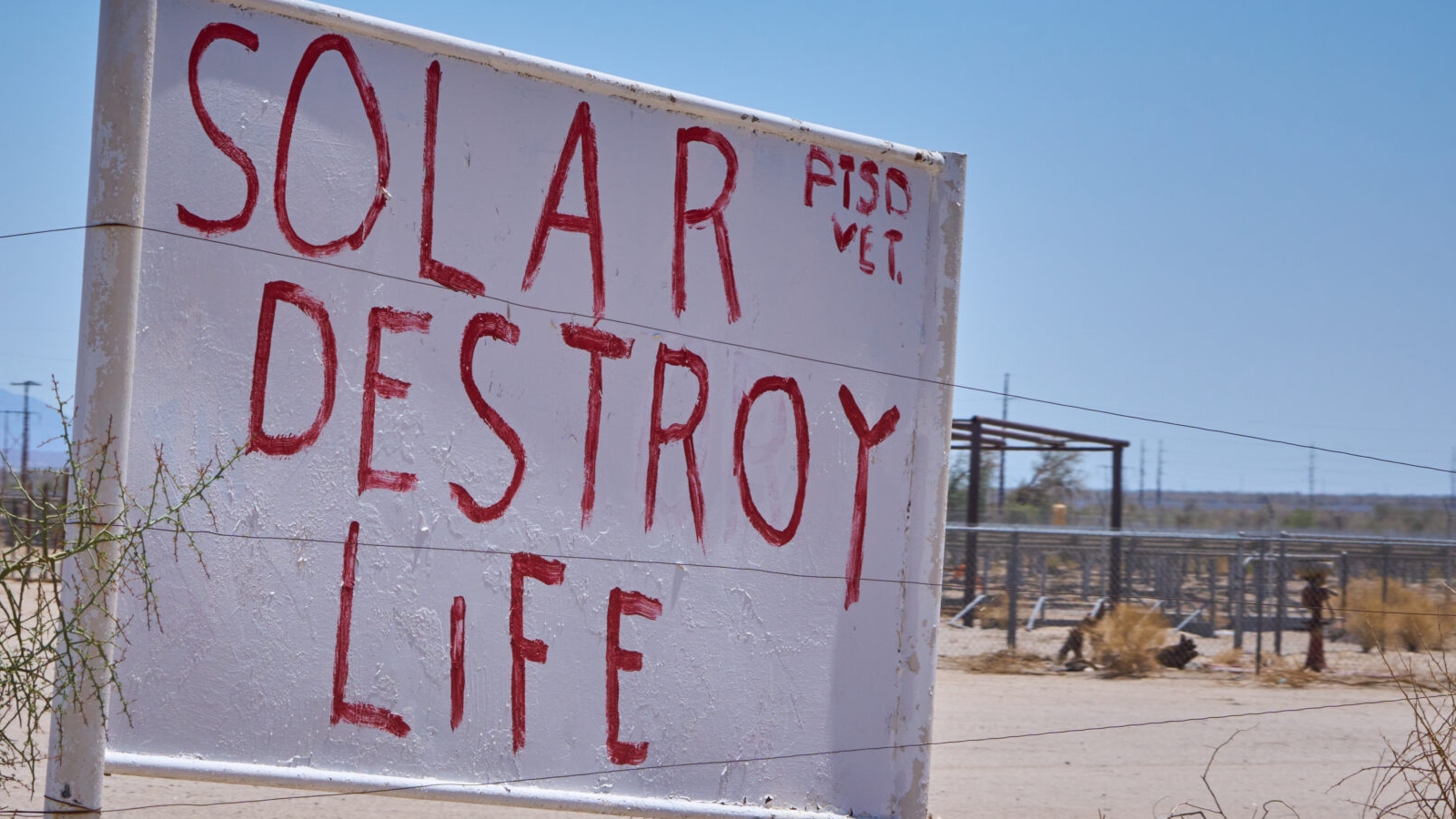
Alex Gould / Inside Climate News
Three hours away from Desert Center, in Tempe, Arizona, two BLM staffers who had studied the hydrology of the Chuckwalla Valley Groundwater Basin and worked for the BLM’s Palm Springs office gave a presentation at the Arizona Hydrological Society in 2021. The topic: “Renewable Energy Impacts on Ground Water in a Desert Basin.”
“That is ground zero for solar field developments in North America,” said Noel Ludwig, one of the presenters and now a hydrologist with the U.S. Forest Service in Colorado. At the time, he said, all the studies on the basin agreed: Groundwater was being pumped out at near or above the rate at which the basin can replenish the supply.
It’s “simple math,” Ludwig said. You can’t remove more water from an aquifer than is added by return flows into it without eventually running out. The Chuckwalla Valley Groundwater Basin is an ancient aquifer, primarily refilled by rain, and takes a long time to replenish.
“It’s just something that’s a groundwater issue—not just in that basin but around the country and around the world,” he said. “They’ve been treating it like a bottomless bank account, without accounting for the long-term and certain implications on people’s wells.”
Individual solar projects don’t use much water, but when added all together, they can start to make an impact, Ludwig and groundwater policy experts said.
Ludwig and his colleague’s groundwater presentation in Tempe “was never accepted by the BLM” and is not reflective of the current mitigation measures for groundwater use, a spokesperson for the agency said.
The BLM did not answer questions about what mitigation measures are in place, if it is looking into the current situation of wells going dry, if it has been monitoring the basin or how it is working with local communities.
But in its environmental assessment for recently approved solar projects, the BLM found water used by solar project development could affect local wells.
Under baseline conditions, it found the basin would have a surplus of 2,390 acre-feet. But the lack of data on the basin makes “performing a detailed analysis” challenging. And the water supply assessment found the aquifer could already be overdrawn by 6,685 acre-feet of water under lower precipitation and water inflow conditions.
Communities see few benefits, all consequences
Teresa Pierce’s porch provides a “front row seat” to Joshua Tree National Park. The view of the desert is nearly endless—until the solar farms interrupt it.
The Lake Tamarisk community got its start as housing for workers at a Kaiser Steel iron mine before morphing into a home for everyone from school-aged children to retirees. In addition to a man-made lake and single tamarisk tree the community’s name suggests, it has a library, post office and fire station.
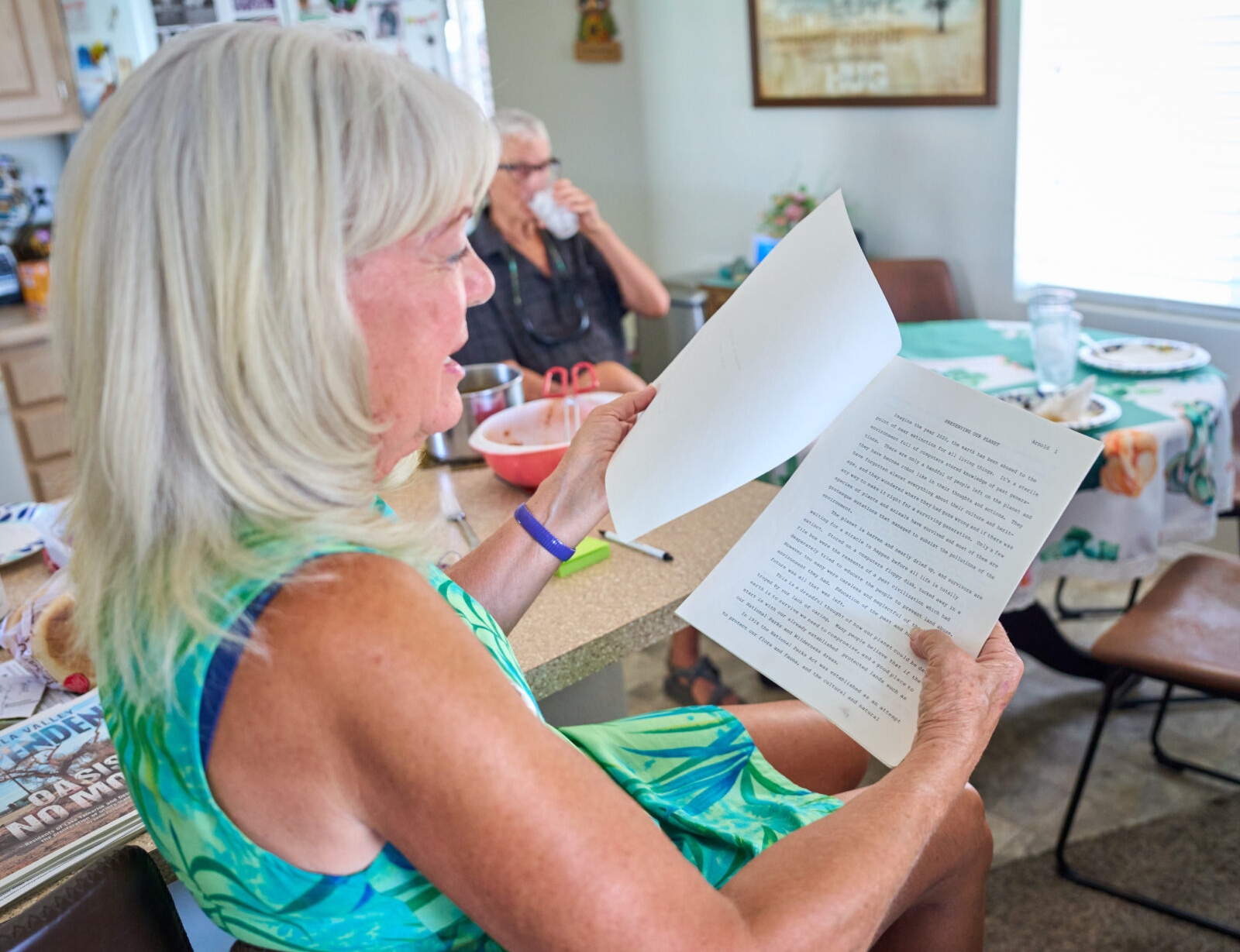
Alex Gould / Inside Climate News
But just outside of town, near Desert Center, what were once vast stretches of desert filled with washes providing essential habitats for the local wildlife are now the most built-out area of solar development in the nation.
Solar farms started here over a decade ago with multiple projects arriving after the American Recovery and Reinvestment Act of 2009, said Mulvaney, the San Jose State University professor who has researched solar projects on BLM lands in the Southwest.
Those projects, while still in view, are miles away from Desert Center. But the area is now seeing another wave of solar development as space on nearby transmission lines opens up, Mulvaney said. Those projects are slowly surrounding Lake Tamarisk, which would be encircled by solar farms on three sides, with the latest project’s panels being 750 feet away and its fences and other infrastructure even closer.
Members of the community say they have long been left out of the decision-making process going back to when the Riverside East Solar Energy Zone was established. Community members said they were never notified directly about Oberon, the most recently approved project, near Lake Tamarisk and Desert Center. When the same company, Intersect Power, proposed another project, only one person received a direct notice about it, and he then informed his neighbors.
When two of the projects in the area were approved for construction last summer, BLM Director Tracy Stone-Manning said in a press release that “Renewable energy development on BLM-managed public lands will continue to help communities across the country be part of the climate solution, while creating jobs and boosting local economies.”
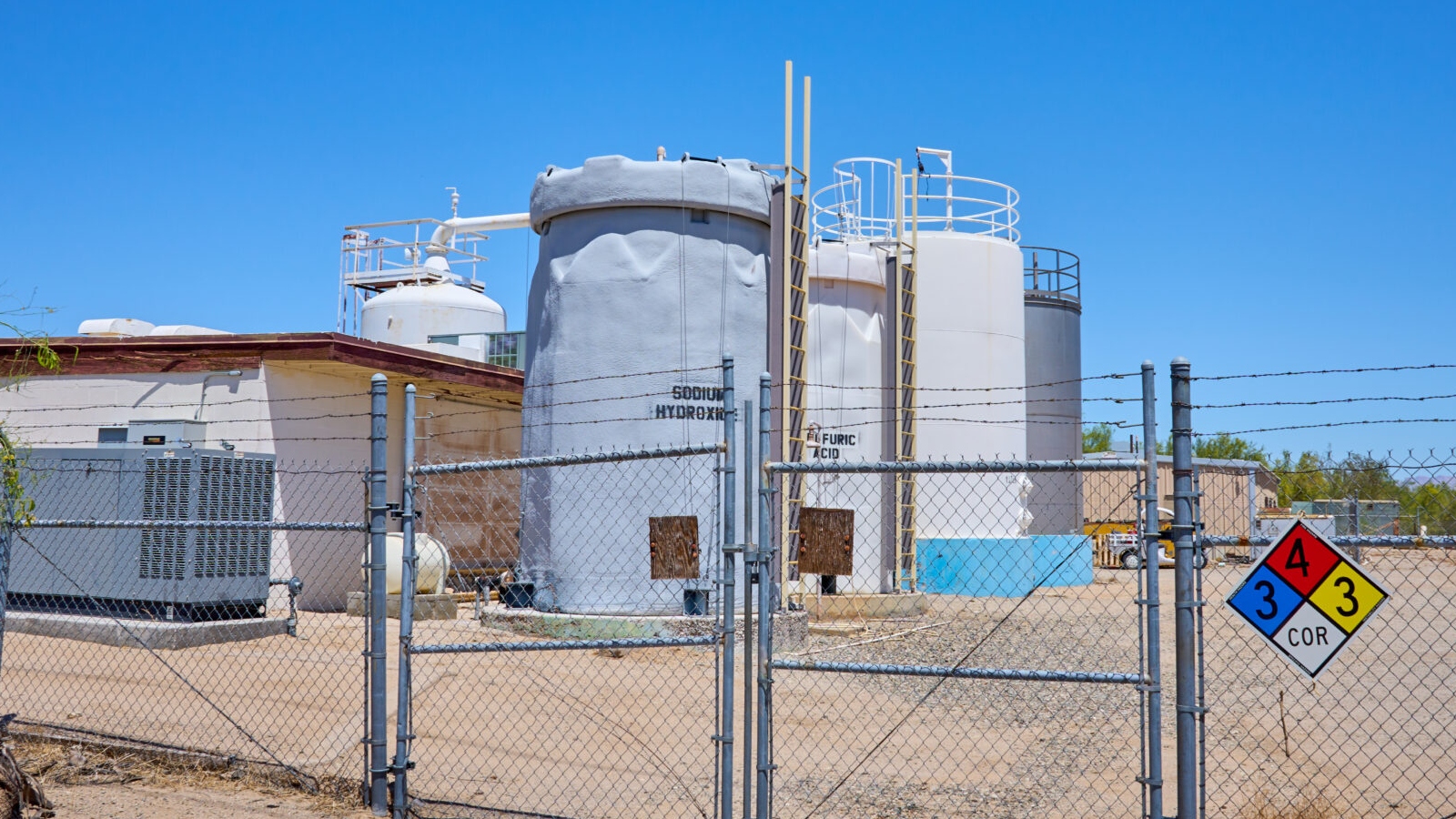
Alex Gould / Inside Climate News
But most people here say they see few of those benefits but endure all the consequences of that development—dust storms that threaten their health, construction noise, intense glare and heat from nearby panels, disruption of delicate ecosystems and the removal of plants that make desert life livable for other species, a drop in home values and the lack of water.
They hope to have their concerns remedied with berms put up around the solar farms, financial compensation for negative impacts like wells going dry, help with air conditioning bills if the development increases the temperature in the area during the summer, and larger buffer zones between the projects and their homes.
“They’re willing to spend millions to schmooze communities but they don’t want to spend money on the project to protect the community,” said Mark Carrington, who once worked as a biologist for the BLM. He discovered the community while roaming the desert during the pandemic and has helped lead its response to solar developments.
While renewable energy projects break ground at record pace, rural communities and vital ecosystems important for biodiversity are getting left behind, said Kevin Emmerich, a cofounder of the environmental group Basin and Range Watch who previously worked for the National Park Service. Emmerich said the projects in the area are being approved despite impacts to the nearby Desert Dry Wash Woodlands, desert tortoise habitat, and the killing of ironwood trees and other vegetation that help hold together a vital ecosystem.
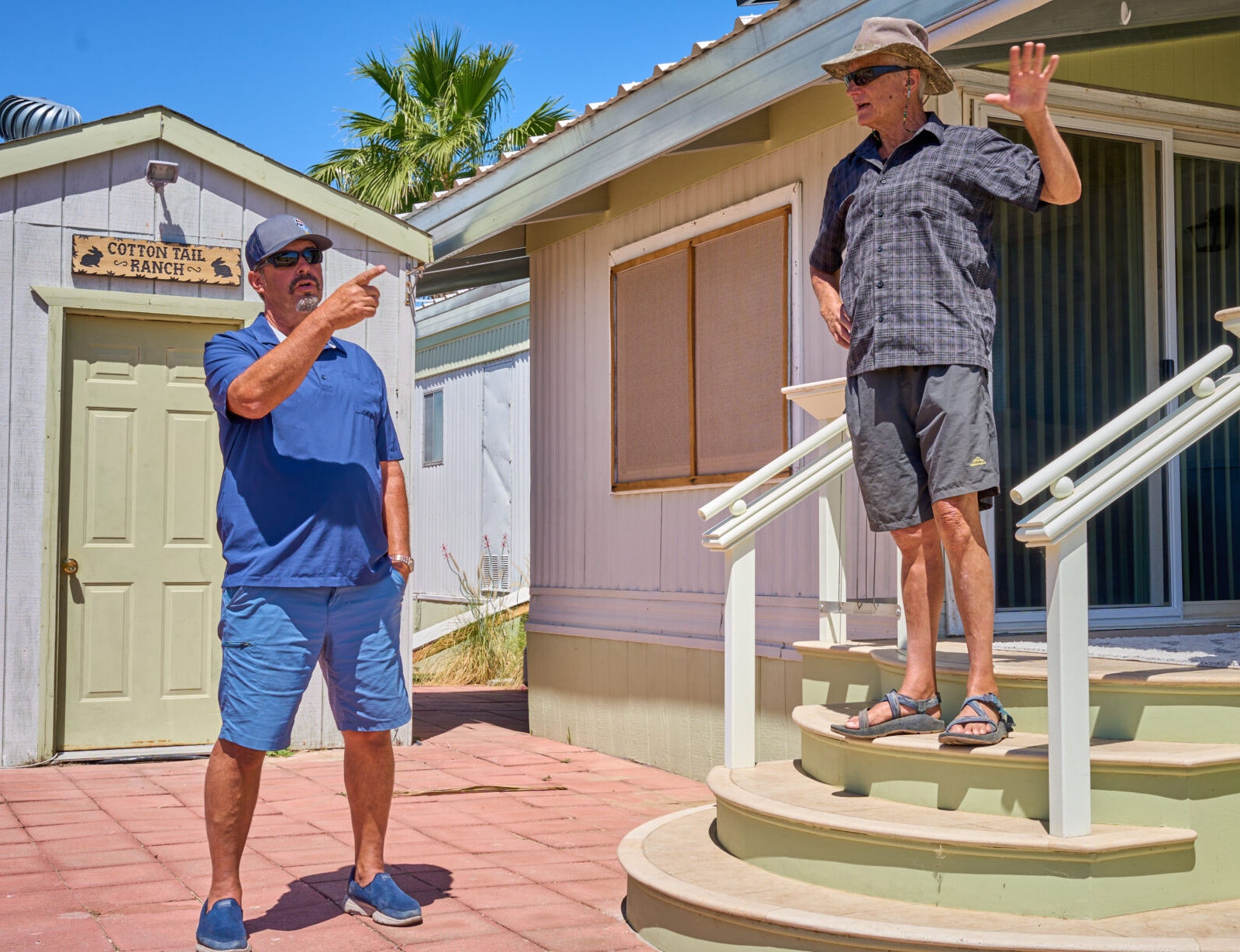
Alex Gould / Inside Climate News
Ripped-out ironwood trees pepper the vistas at many of the solar sites, and trash fills boxes meant to provide homes for desert tortoises.
The country may have a mandate to develop more renewable energy sources and companies may have made investments in future projects around Desert Center—Intersect Power’s substation to allow for more development, for example—but people in the communities should come first, Emmerich said. “You (the BLM) don’t work for these companies—you work for us,” he said.
As the water here begins to disappear, residents worry the Lake Tamarisk wells are next. The community is entirely reliant on groundwater. If their wells run dry, all they could do is drill deeper or hope the drawdown of the aquifer is just a short-term impact of the nearby construction and not a sign of overdraft for the entire region.
“I have not seen anybody mitigate, or even kind of highlight (water) as a major concern” for any solar projects in the Southwest, Mulvaney said. “I think, in general, people aren’t aware of this issue across the U.S. because most solar farms don’t require groundwater wells. This is a Western phenomenon to even use groundwater wells for these things.”
But the development is unlikely to end anytime soon. So far around 20,000 acres of land has been developed in the solar energy zone the community falls within. Another 120,000 acres are available for solar development.
And there’s another renewable electricity-generating elephant in the room that would demand even more of the aquifer’s water—the Eagle Crest Pump Storage Project.
That project would generate 1,300 megawatts of power by pumping water uphill from one former mining pit to another and then releasing it back downhill to spin turbines that would generate electricity during periods of high demand. It would use 4,456 acre feet of water a year during construction and then 2,050 acre feet during operation, “more than ten times the operational groundwater of all other cumulative projects combined,” according to a water assessment of the basin for the Oberon solar project from the BLM.
The Chuckwalla Valley’s aquifer below the BLM’s land has just over 2,000 acre feet of water left before the basin begins to be over-pumped, according to the recent water assessments. One of the proposed solar projects would use half of that if approved. Even under the BLM’s baseline assumptions of how much water there is, further build out of renewable energy projects could quickly sip away what is left.
Not far from the Riverside East Solar Energy Zone, above a different aquifer, lies the town of Blythe. The Colorado River runs by it, and agricultural operations dot the landscape. Those farming operations use far more water than any solar development, and as California looks to use both less groundwater and Colorado River water, replacing those fields with solar is being viewed as a viable alternative, said Mulvaney and Ayre, with the Public Policy Institute of California’s Water Policy Center.
As long as the federal government’s policy is to encourage utility-scale solar development on federal lands, places like Desert Center and Lake Tamarisk will continue to see projects nearby, Mulvaney said. And as long as that development is occurring, residents like Teresa Pierce and Mark Carrington will be pushing back.
Flipping through her old college papers, Pierce realized her fight against the solar development wasn’t the first time conservation issues had caught her attention. In 1984, her first college English paper—for which she got an A+—was on the importance of conserving the nation’s national parks and wilderness areas.
“We should stop and reflect for a moment on the reasons why we need parks and wilderness areas,” she wrote. “If indeed the reasons are to achieve oneness with our world and our universe then we better do the best we can to hold onto what we have.”
Her goal now is to hold on to what she found at Lake Tamarisk—the beauty of the desert.

